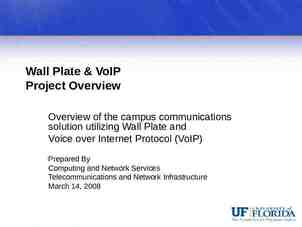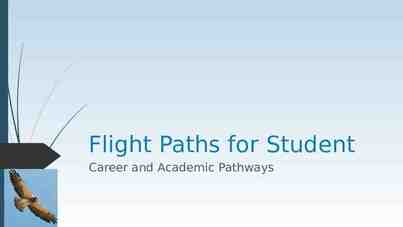Title I-D, Subpart 2 Neglected, Delinquent and AtRisk Youth
13 Slides1.15 MB

Title I-D, Subpart 2 Neglected, Delinquent and AtRisk Youth

Purpose The purpose of Title I-D is to improve educational services for students in locally operated facilities for neglected or delinquent students to: – Provide opportunity to meet state standards – Improve transitions into community – Prevent drop out and return to facilities

Eligibility and Funding Eligibility: – An LEA is eligible to receive funds if there is a locally operated facility within its geographical boundaries Funding: – Determined by annual October Caseload Count – Neglected funds flow through Title I-A – Funds can be use at facility, district, and school levels

What It Can Fund Requirements Prepare students to complete high school, enter training or employment programs, or further education. Facilitate transition Dropout prevention programs Suggestions Serve “at-risk” youth Coordinate health and social services Mentoring & peer mediation CTE, special education, career counseling

Supporting Ready Schools, Safe Learners RECOMMENDED Use technology to maintain instructional consistency Clear expectations of participation across models Outreach to welcome students back into community Work with facility education staff to monitor student progress Provide SEL and mental health and counseling supports Communicate with facility providers and parole/ probation officers regarding changes to instructional models

Application Requirements Completed in CIP Budget Narrative Answer all questions Describe and budget for any costs associated with the program

Transferability Funds can be transferred into Title I-D Can transfer all or a portion of the funds into a grant award for the same year Must be claimed from original award in EGMS Carryover funds cannot be transferred

JULY AUG 2019 DEC 2019 2019-20 BUDGET NARRATIVE APPLICATION OPENS 2019-20 BUDGET NARRATIVES DUE 2019 BEGINNING OF 201920 GRANT PERIOD 2019-20 FEDERAL FUNDS TIMELINE YOU ARE HERE NOV 2020 SEPT 2020 FINAL DATE FOR ALL 2019-20 CLAIMS FOR *INITIAL GRANT PERIOD NOV 2020 FINAL DATE FOR OBLIGATION OF 2019-20 FUNDS FOR *INTIAL GRANT PERIOD UNCLAIMED FUNDS BECOME “CARRYOVER” NOV 2020 SEPT 2021 NOV 2021 CARRYOVER APPLICATIONS FOR 2019-20 FUNDS OPEN FINAL DATE FOR OBLIGATION OF 2019-20 FUNDS FINAL DATE FOR ALL 2019-20 GRANT CLAIMS *INITIAL GRANT PERIOD: 7/1/19 – 9/30/20 (15 MONTHS)

YOU ARE HERE JULY 2020 AUG 2020 BEGINNING OF 202021 GRANT PERIOD 2020-21 FEDERAL FUNDS TIMELINE NOV 2021 SEPT2 020 2020-21 BUDGET NARRATIVE APPLICATION OPENS DEC 2020 2020-21 BUDGET NARRATIVES DUE NOV 2021 SEPT 2021 FINAL DATE FOR ALL 2020-21 CLAIMS FOR *INITIAL GRANT PERIOD FINAL DATE FOR OBLIGATION OF 2020-21 FUNDS FOR *INTIAL GRANT PERIOD UNCLAIMED FUNDS BECOME “CARRYOVER” NOV 2021 SEPT 2022 NOV 2022 CARRYOVER APPLICATIONS FOR 2020-21 FUNDS OPEN FINAL DATE FOR OBLIGATION OF 2020-21 FUNDS FINAL DATE FOR ALL 2020-21 GRANT CLAIMS *INITIAL GRANT PERIOD: 7/1/20 – 9/30/21 (15 MONTHS)

Carry Over Carryover funds are funds that are not obligated in the initial year of allocation – July 1 – September 30 of the following year Application for CO opens mid-November District has until September 30 to obligate

Supplement Not Supplant Federal funds cannot be used to supplant, or take the place of, funds that would have been spent if Title I-D funds were not available. Test I: Are the services that the district wants to fund with ESEA funds required under state, local, or another federal law? If they are, then it is supplanting. Test II: Were state or local funds used in the past to pay for these services? If they were, it is supplanting. Test III: Are the same services being provided in other schools paid for with state or local funds? If they are, then it is supplanting.

Resources and Support Oregon Department of Education Title I-D Oregon Department of Education Youth Corrections Juvenile Detention Education Programs Oregon Department of Education Long Term Care and Treat ment Education Programs USED: Title I-D: Neglected , Delinquent, and At-Risk Youth Non-regu latory Guidance National Technical Assistance Center for the Education of Neglected o r Delinquent Children and Youth (NDTAC) National Center for Juvenile Justice Jen Engberg, Title I-D Program Specialist [email protected] 503-947-0339







